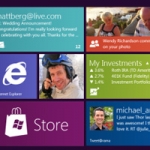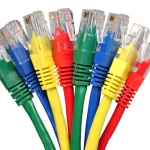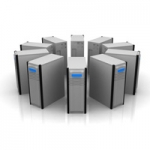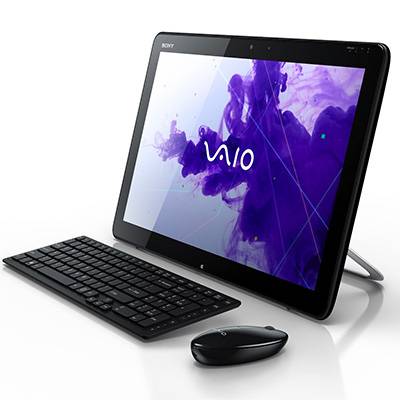Vince Lombardi, one of the most successful head coaches in NFL history, once said “If you are five minutes early, you are already ten minutes late.” Although it wasn’t its intended use, this quotation can easily apply to technology. The tech industry is constantly changing, improving, and innovating. Adapting to changes is something all businesses must do to thrive, small and medium businesses included.
Directive Blogs
With 2017 on its way out, there are many great technology solutions that businesses can take advantage of. Some of the most notable topics in business technology in recent years include business intelligence, artificial intelligence applications, and machine learning. What are some of the most important technologies that you’ll want to keep in mind for the 2018 business year?
Technology is a necessity for businesses everywhere if they are to reach their goals, which are themselves influenced by the technology that businesses have access to. If this cycle is to continue, a business needs to establish what is expected to come next in the line of IT innovation. From the looks of it, businesses are currently placing convenience in high regard.
Selecting a managed service provider should be like selecting any employee. You need to make sure that your expectations are going to be fulfilled, and that your selection will be there when you need them to be. However, the criteria you examine your potential IT service provider by should be a little different than how you evaluate your other prospective team members.
The holiday season has always been one of deep-seated traditions, some that draw from ancient customs, and some that are inspired by more contemporary trends. These traditions have been shaped, and often inspired by, the technology available in the day. Today, we’ll reflect on how the technologies we have now have impacted our celebratory traditions.
As we discuss business technology, we occasionally broach topics that not everyone may be familiar with. Despite the recent media coverage that has been afforded to it, Bitcoin and blockchain technology may be a good example of one such topic. To resolve this, we’ve put together the following primer on this technology and how it will impact data security in the future.
Your business either has a sound plan to manage its IT maintenance, or it does not. There is no middle ground here. Either you have an internal team dedicated to maintaining your IT infrastructure, or it’s not being taken care of as well as it should be. Even if you do have an internal team, you might notice that they simply don’t have time on their hands to handle all of their responsibilities. We’re here to introduce you to one of the most notable ways of keeping your technology in proper working order: managed IT services.
Information technology has always been a hotbed for future predictions. Whether it was Marconi’s grand plans for wireless communications or the bold prediction that every person would be carrying around a computer that fits in the palm of their hand, the future always looks bright when new technologies are considered. But, what does the immediate future of information technology hold?
When security and efficiency are some of the biggest benefits to updated information technology, it sounds that IT is something that a governing body should prioritize internally. However, many governments have trouble doing so, oftentimes to their own detriment. Why is that, and what can a business learn from this phenomenon?
There’s no getting around it: technology has spoiled us. We have had access to 4G mobile data speeds since 2009, and we’re already clamoring for the next thing. While 5G has been in development for some time now, it will likely be quite a while before it is available for common use. Here, we examine why 5G is likely going to take at least a few more years to arrive.
Money needs to move in order for the economy to work. Traditionally, banks are the major lending institutions, and as a result have to adhere to a myriad of regulations. To provide an equitable system that people aren’t afraid to utilize, there are a lot of checks and balances that have put in place by the bank and regulators, alike. Today, there is growth of what are called marketplace lenders (MPLs) that are changing the way people (and organizations) can access capital and it is fueled by what is referred to as FinTech, or financial technology. Today, we will take a short look at FinTech and how it is changing the way we manage, borrow, pay, see, and use money.
Wireless charging seems to be a perfect idea - imagine if someday, our devices would never run out of charge? This may be why such aggressive progress has been made toward building a better battery charger. However, not everyone is convinced that wireless charging will have the effects that are desired of it.
Have you ever found yourself packing too many things for a short trip? What about your technology? Do you have multiple devices? The truth is that no matter the reason you are traveling, you don’t need to pack like royalty to be able to be productive while you are on the road. Today, we talk about how scaling down your technology while you travel is a solid practice.
Although we’re in the habit of discussing ways to keep your business more secure, we unfortunately have to discuss how to keep yourself more secure against a business. Walmart recently filed a patent that could potentially be used to undermine the security of everyone there, from shoppers to employees. We took the time and dug into the jargon in the patent to give you a better look at the situation.
A server is a necessary component of any business’ IT infrastructure, as its job is to make sure that information and policies are distributed the way they need to be across a network. Once, servers had to be on-site in order to work, there is now the option to have a cloud-hosted virtualized server. Which of these is right for your needs? Let’s do a quick comparison to find out.
There is no shortage of useful devices that a business could benefit from, but the most popular is undoubtedly the smartphone. As a communication tool, it is effectively unparalleled - you can use your device to conduct business and communicate from anywhere. However, this is neglecting many of the other abilities that make the smartphone a smart choice for your business productivity, especially when you’re mobile.
Displays are cropping up everywhere these days, from electronic billboards to office televisions to just about any consumer electronic device. Due to the high demand for these displays, many manufacturers have turned to OLED technology to make high definition capabilities more accessible. We’ll focus on the differences between OLED displays and how they are fundamentally superior options compared to the traditional LED displays.
Windows 10 is the most utilized operating system on PCs today. As a result, Microsoft has made it a priority to take on some of today’s most prevalent threats. We’ll go through these security features based on the state of the computer’s usage to get a better idea of how much is done to improve your security.
Windows 8? Doesn't it feel like Windows 7 just came out? Windows 7 isn't being replaced anytime soon; the latest operating system by Microsoft hasn't even been out for two years, but that doesn't mean Microsoft isn't cooking up their next incarnation. Microsoft has always kept small businesses in mind as well as the residential consumer, so will Windows 8 stick with the same trend?
In today's IT industry, downtime can have a huge impact on your company's bottom line. When system downtime occurs, whether it affects an individual employee or the entire company, it means lost money. The definition of the term "downtime" is very ambiguous, although at Directive we consider any issue where an employee can't do their job properly due to technology not being available to be downtime. Even though an application may be up and running, it is essentially "down" to a user if the application can't be used no matter the reason.
Over the past couple years we've seen a huge shift in the reliability and functionality of the tablet PC. What was once was a struggling market of just a few overpriced, bulky, devices that were neither practical nor stylish has become the next big consumer product. Tablets have been making it into the business world, supplementing smartphones as a new addition to mobile arsenals. We're going to highlight the best two tablets on the market that you can buy right now.
Granted, growing up we were made to believe that by now we'd have flying cars and robot butlers, but technologically speaking we're in a pretty great era of gadgets and conveniences that aren't just giving us cool toys to play with, but are changing the way we communicate, learn, and work. Let's look at what's in store for the world in 2012.
The mobile smart phone market is certainly a healthy one, and powerful devices are getting into more hands (for both consumers and businesses). There are a few great selections to choose from; RIM's BlackBerry, Microsoft's Windows 7, Google's Android OS, and Apple's iPhone. The latest incarnation of the Apple iPhone hits store shelves today, although from first glance it looks the same as the previous iPhone 4. Let's take a look at some of the differences.
Apple CEO Steve Jobs has resigned from the consumer electronic company. Leaving behind a legacy that has made Apple considered ahead of the curve technology-wise several times, and has changed the game in the industries that he's touched. While Microsoft still rules the personal computer market globally towering over OSX's 8.3% market share, Apple has certainly played a major roll in paving a path to high-end electronics and devices over the past decade that has raised the bar for companies, and has even created a few new industries to boot.
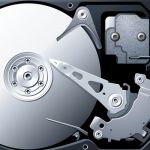 There comes a time when you are looking at a new laptop and you are asked the question: Do you want a Solid State Drive, or a traditional Hard Disk Drive? Well here is a quick run-down of both technologies in the hopes of shedding some light on the issue. By the time you are done reading this article, you will be better able to answer that question.
There comes a time when you are looking at a new laptop and you are asked the question: Do you want a Solid State Drive, or a traditional Hard Disk Drive? Well here is a quick run-down of both technologies in the hopes of shedding some light on the issue. By the time you are done reading this article, you will be better able to answer that question.
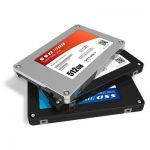 Companies such as Facebook, Google and Amazon are switching to Solid State Drives (or SSDs for short) in a push for greater performance with reduced operating and hardware costs. Reduced hardware costs? Yes, while Solid State Drives are more expensive than traditional hard drives, they afford certain advantages over the legacy storage hardware.
Companies such as Facebook, Google and Amazon are switching to Solid State Drives (or SSDs for short) in a push for greater performance with reduced operating and hardware costs. Reduced hardware costs? Yes, while Solid State Drives are more expensive than traditional hard drives, they afford certain advantages over the legacy storage hardware.
You are an expert in your field, right? Whether you sell a product or commit to a batch of service offerings, you know your job and you know it well. We're guessing you have some great employees who know their job well too, right? You hired them because of their drive, interest, and possibly knowledge in the field (or you spend plenty of time teaching and training them). So when someone's computer goes down, why should they waste their time trying to fix it?
For some small businesses around Upstate New York, administrative IT tasks and computer support are done the old fashioned way; either over the phone or on-premise. These traditional methods are a major waste of time and money, and can lead to plenty of unproductive behavior very quickly. Today we're going to examine how remote technical support can benefit businesses.
As technology gets more advanced, more of it can get crammed into tinier spaces. Mobile devices used to be heavy, clunky items that could just barely get the job done; they just didn't have the oomph that your desktop workstation had. Today business owners are adopting portable powerhouses like tablets and high-end smart phones to stay connected, but for those on the go often, a laptop or netbook is often a good way to go as well. The Laptop/Netbook debate has gone on since Netbooks first emerged on the market, so let's take a look at the benefits of both.
Microsoft's OneNote is often seen as one of the extra applications that is bundled in with several Microsoft Office packages. In this article, We'll introduce OneNote, and show off some neat things it's used for, and how it can make your life easier. OneNote has a whole slew of neat features that you can take advantage of, which we'll cover in the article as well.
Tablets are definitely becoming a staple in the consumer electronics world. For the longest time, the tablet PC was an expensive, clunky device that just didn't wow consumers. Some businesses had adopted tablets back in the day, but they were difficult to use, hard to support, and they simply didn't perform for the price tag. However, like many consumer electronics, Apple reinvigorated the tablet market with the original iPad, and now it would seem tablets are here to stay. The question is, are they right for businesses?
The words Productivity and Internet have been fit together in many different sentences, and usually in the sense that the Internet is a Productivity-killer. Take Facebook, for example; there are many arguments stating that Facebook is costing companies billions of dollars because employees are spending too much time on the social network while at work. Of course, Facebook (and the other social networks) are practically mandatory for businesses who want to market themselves. Other companies are clamoring that personal social media use greatly improves productivity and employee moral.
Last time, we blogged about whether or not social media and personal Internet use was a bottleneck for employee productivity. Let's not look at the Internet as a fundamental time-waster or a necessary evil. After all, the Internet has changed the way companies do business. This time we're going to investigate if your Internet is keeping up with your company.
 Technology is changing quickly and businesses are seeing a wide variety of options replacing traditional IT methodology that is driving change and productivity to businesses of all sizes. It's getting easier to take work with you with mobile devices and hosted services, but are these just expensive new toys or do they provide serious benefits to businesses?
Technology is changing quickly and businesses are seeing a wide variety of options replacing traditional IT methodology that is driving change and productivity to businesses of all sizes. It's getting easier to take work with you with mobile devices and hosted services, but are these just expensive new toys or do they provide serious benefits to businesses?
 Businesses are inundated with information, programs and quick solutions on making companies green. Some of these suggestions can be implemented today, others my take more time. However, going green, can save your organization significant amounts of money. Wasted paper, plastic cups and wasted electricity are all money literally thrown away. Here a few suggestions to get you off on the right foot:
Businesses are inundated with information, programs and quick solutions on making companies green. Some of these suggestions can be implemented today, others my take more time. However, going green, can save your organization significant amounts of money. Wasted paper, plastic cups and wasted electricity are all money literally thrown away. Here a few suggestions to get you off on the right foot:
Businesses these days depend on having reliable, fast desktop computers. The trouble is, these high-end desktops offer plenty of resources that never get touched, making them underutilized. Huge hard drives and extremely fast CPUs mean each desktop has more capabilities than most users will ever tap into.
You've probably heard of cloud technology. All the big names in the technology industry are talking about it; but for a lot of people, it's still just a buzz word. Microsoft has been pushing the idea of a cloud for a while, with a couple sitting at an airport waiting for a layover, with the end result being that the cloud ceases their boredom by letting them stream movies from home. What exactly is the cloud and why does it matter for businesses?
Netflix unexpectedly announced a split between their two offerings, DVD-by-Mail and their streaming service into two separate services. This is surprising as Netflix has continued to grow in popularity and profits every quarter. Why fix what isn't broke? After all, the streaming portion of Netflix claims about 20% of North America's bandwidth during peak hours, which is certainly saying something. Is there something for small businesses to learn from Netflix?
Small business owners are discovering they don't need to be chained to their desk to use their computer, and are finding it much easier to be productive with the ability to take their workstation with them where ever they go. The concept isn't new, but the trend hasn't caught on for a lot of small businesses. Business owners who have ditched their desktop for a laptop have a whole world of benefits. Let's take a look at what some of those benefits are.
Hard drives have been getting bigger (capacity-wise) and cheaper over the past decade which is great news for everyone. Toshiba predicts that in 2012 that over 2 zettabytes (2 trillion gigabytes!) of data will be created and replicated (double from 2010). While costs are going down, data growth is still a challenge for data centers and IT administrators.
There has been a growing trend where businesses are allowing more employees to work from home or other remote locations. Technology makes this possibly by letting users remote into their work environment securely as if they were sitting at their desk at the office. VoIP phone solutions can even bring the worker's office phone to them, no matter where they are.
 Hopefully, you have a list of personal items that you regularly clean. Obvious belongings that need a good scrubbing are things like bed sheets, dishes, and your bathroom floor. If your computer is not on your cleaning chore list, then it needs to be. A clean computer is a happy computer, and not disgusting like a dirty one.
Hopefully, you have a list of personal items that you regularly clean. Obvious belongings that need a good scrubbing are things like bed sheets, dishes, and your bathroom floor. If your computer is not on your cleaning chore list, then it needs to be. A clean computer is a happy computer, and not disgusting like a dirty one.
Voice Over IP phone systems add a lot of great features that businesses can take advantage of, and are improving the way companies are using their voice communication. Besides the fact that supporting older analogue phone systems is becoming increasingly harder as technology carries us forward, here are 7 reasons why Upstate New York businesses should switch over to voice over IP.
Laptops and Netbooks boast portability, but many laptop users find that they need to take their power cables with them if they want their device to run for more than a couple hours. While older laptops are typically less efficient, it also isn't uncommon for the batteries to wear down over years of use. Sure, you can purchase a new (or bigger) battery, but let's go over a few ways you can improve the battery life on your laptop.
Believe it or not, IT companies like DirectiveSHORT work a lot like other businesses. We have many of the same needs in our business; from accounting to organizing data to marketing ourselves. As an IT company, yes, we can manage your workstations, servers, and network, but there are other solutions we have up our sleeves that our clients can take advantage of, that just make sense for an IT company to provide, no matter what.
We'd really like to gear this conversation towards the other Oneonta business owners out there who might not have a solid plan when it comes to IT & Computer Support. At DirectiveSHORT, we deal with a lot of the same business-related issues that our clients do. Marketing, driving the business forward, taxes, internal policies, you name it. Believe it or not, we also have our own IT infrastructure that needs to be kept up and maintained. We see the same kinds of expenses (after all, working on our OWN technology internally is time our techs could be doing their jobs). We've put together a few big mistakes that we've seen businesses make that take much less effort to prevent than they do to fix later on when it is too late.
Virtualization isn't new for small businesses, some companies have been enjoying the benefits of server virtualization for many years. However, the concept is new to other growing organizations. Virtualization allows you to consolidate the number of servers you have in your company using one of several virtualization packages. Let's take a look at a few major reasons to consider server virtualization.
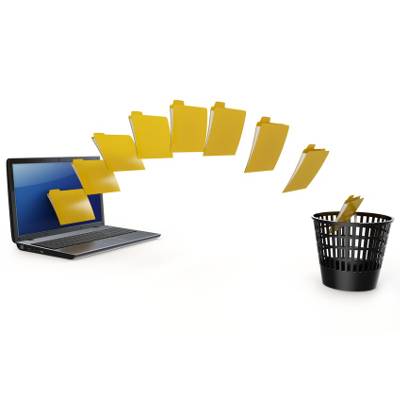 After you've finished with that incriminating file (you know which file we're talking about), you will drag and drop it into the Recycling Bin. You may think that just because you selected "Empty Recycling Bin" that the evidence is gone forever, but that's not exactly how the Recycling Bin works. You will need a more permanent solution to completely cover your tracks.
After you've finished with that incriminating file (you know which file we're talking about), you will drag and drop it into the Recycling Bin. You may think that just because you selected "Empty Recycling Bin" that the evidence is gone forever, but that's not exactly how the Recycling Bin works. You will need a more permanent solution to completely cover your tracks.
Is your organization using the latest technology solutions? If so, that’s great--you’ve taken the first step toward achieving maximum productivity and efficiency. However, you need to realize that no technology solution comes without its quirks that need to be addressed. Here are two ways that your new technology solutions could potentially be putting your business’s infrastructure at risk.
When was the last time you had to reach out to IT support, only to have to wait for the tech to drive to your office and resolve the problem far too late? This is a common occurrence amongst business owners, and if your technology is mission-critical, you can’t afford to deal with more downtime than necessary. How can your business more effectively take advantage of technology support? A remote monitoring and maintenance solution may be just what you need.
While news sources might lead the layman to believe that most issues facing the typical SMB come from cyber criminals lurking online, the reality is far less dramatic. However, this misconception makes these issues no less serious, and still things to prepare for. Let’s review some of the most common causes of technological issues in the office environment.
It doesn’t matter where your business is located--chances are you’re susceptible to thunderstorms. Lightning storms are very unforgiving, and they can lead to all sorts of problems for unprepared businesses. We’ll discuss some of the ways that your organization could be affected by a lightning storm, as well as how you can take measures to mitigate these dangers in the future.
Every business is searching for ways to improve productivity. There are now quite a few methods being used to boost the amount that each employee can accomplish, many of which revolve around technology. Admittedly, some of these methods may not be attainable for the average SMB… yet. However, as technology advances you may find yourself able to leverage some of these productivity-enhancing tools to improve the look of your bottom line.
Do you know how the countless devices entering the workplace will affect your business’s infrastructure and security? It’s important to remain future-minded about how the Internet of Things and connected devices will influence your business in the near future. According to HAX Hardware Trends, 2018 will see a multitude of changes in how we approach the Internet of Things, as well as how businesses manage it for their networks.
Businesses today rely on so much technology that it’s impossible to think about operations without considering how technology can make them more efficient. In fact, many organizations would completely collapse without the innovations brought about as a result of technology development. One of the hottest trends over the past few years has been the shift from in-house assets to web-based assets, ranging from application access to infrastructure hosting.
The sad truth about computers is that when they inevitably break, you have to get them fixed; or, you have to order a new one. When PCs started to be utilized for mass productivity, however, businesses had to find a better way. It’s been years since the first managed services provider hung out their shingle, and over that relatively short time the managed services industry has grown to be a $150 billion-a-year industry. The combination of IT becoming an important part of nearly every business resulted in the obvious demand for affordable IT support. This trend has seen many businesses cutting IT staff to make way for outsourced managed services, and all it provides. A problem that both businesses, and the MSPs that they hire, face is that computers eventually break.
How much value does your company get from its technological assets? This might seem like a simple question, but it doesn’t have a simple answer. You can implement the latest and greatest solutions, but you don’t necessarily gain value from them, or as much as similar organizations in your field. With businesses aiming to cut costs and secure a profitable future, how can you make sure that IT is providing value to your organization?
How often do you see smart technology in headlines? The term is thrown around a lot, and it’s because there are countless products circulating in both the consumer and business environments. These connected devices range from smart forks to smart cars, so you can imagine that there are a fair number of useful (as well as useless) applications of this technology. How has it changed in recent months, and what will smart technology look like in the future?
As financial services have become a much bigger percentage of the economy in the United States, more interest, and capital, is being poured into improving financial services technology. Known as FinTech, there have been many great recent innovations that provide better information, opportunities, and ultimately returns for investors. This month, we take a look at what the FinTech industry is trying to do, and the effects it has on investors, and the economy as a whole.
Technology has changed the way that a lot of different industries approach operations, and academia is no different. Depending on the type of student, however, the use of technology differs and varies considerably. We’ll discuss how those in education take advantage of technology in ways that may have seemed so far away just a few decades ago.
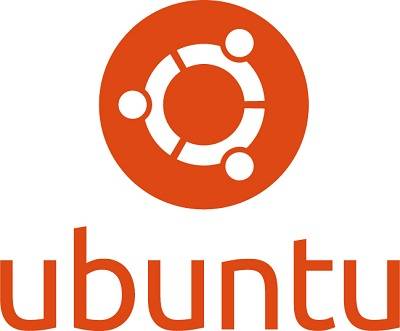 Disclaimer: This tip is geared toward advanced users. Directive features a comprehensive IT support solution and help desk that can give novice and intermediate PC users direction.
Disclaimer: This tip is geared toward advanced users. Directive features a comprehensive IT support solution and help desk that can give novice and intermediate PC users direction.
Have you ever been a victim of the Blue Screen of Death and tried to reboot your computer only to find now Windows won't load? The cause could be a numerous amount of things from new hardware installed, software updates, or worst case scenario, a virus/trojan. Now how are you going to get your personal pictures, music and documents off of your computer? Here's a solution.
For the last several years, we have annually asked the members of our team what they were grateful for. It doesn’t have to be a major thing, just some way that technology has improved our everyday lives. After a few silly answers, like memory foam (which is great) and forks (also important technology), they ended up coming up a few great technologies that they are thankful for. Here’s a few stand out items that we wanted to highlight:
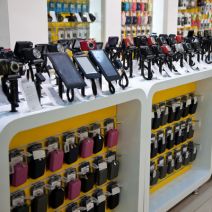 Last February RadioShack declared Chapter 11 bankruptcy and announced plans to sell between 1,500 and 2,400 of its stores. IT techie’s around the country are mourning the loss. It almost feels like losing a friend that’s always been there for you. We need closure, so let’s all gather around the store’s silicone grave and say fare thee well to RadioShack.
Last February RadioShack declared Chapter 11 bankruptcy and announced plans to sell between 1,500 and 2,400 of its stores. IT techie’s around the country are mourning the loss. It almost feels like losing a friend that’s always been there for you. We need closure, so let’s all gather around the store’s silicone grave and say fare thee well to RadioShack.
 If you think you are not up to date on your tech jargon, don't feel bad. A recent study conducted by Vouchercloud.com asked 2,392 adults multiple choice questions about the definitions of common technology terms. The findings suggested that many of them were worse off.
If you think you are not up to date on your tech jargon, don't feel bad. A recent study conducted by Vouchercloud.com asked 2,392 adults multiple choice questions about the definitions of common technology terms. The findings suggested that many of them were worse off.
 Regardless of how your business’s administration is set up, you should be aware that anyone in a position of authority must have a basic understanding of how IT, and its related responsibilities, functions for your business. Here are four ways that you can learn more about how IT works within your organization.
Regardless of how your business’s administration is set up, you should be aware that anyone in a position of authority must have a basic understanding of how IT, and its related responsibilities, functions for your business. Here are four ways that you can learn more about how IT works within your organization.
 Business owners who spend a lot of time on the road, like during a commute or on a business trip, understand how difficult it is to use smartphones while driving. Despite the fact that it’s illegal in many places, some people refuse to put down their phones and concentrate on the task at hand: driving. Doing so puts not only themselves, but everyone else on the road at risk of an accident, which can lead to expensive insurance payments and vehicle maintenance costs.
Business owners who spend a lot of time on the road, like during a commute or on a business trip, understand how difficult it is to use smartphones while driving. Despite the fact that it’s illegal in many places, some people refuse to put down their phones and concentrate on the task at hand: driving. Doing so puts not only themselves, but everyone else on the road at risk of an accident, which can lead to expensive insurance payments and vehicle maintenance costs.
 The 1990s were a golden time of technology with VHS, floppy disks, and beige computing hardware aplenty. Back then, learning of new technology shortcuts was totally rad. Although, looking back, many of these cool tech tips are now obsolete. Yet, they still hold a special place in our hearts. Here are some of our favorite technology tips from the ‘90s. Which ones do you remember?
The 1990s were a golden time of technology with VHS, floppy disks, and beige computing hardware aplenty. Back then, learning of new technology shortcuts was totally rad. Although, looking back, many of these cool tech tips are now obsolete. Yet, they still hold a special place in our hearts. Here are some of our favorite technology tips from the ‘90s. Which ones do you remember?
 Windows 95 changed the way that consumers saw personal computing, and it heavily influenced future versions of Microsoft’s Windows operating system. Over twenty years later, you can expect to see significant changes and improvements, to the point where those who weren’t exposed to older technology don’t have any clue what it is. Nowhere is this more painfully true than watching how teens react to Windows 95.
Windows 95 changed the way that consumers saw personal computing, and it heavily influenced future versions of Microsoft’s Windows operating system. Over twenty years later, you can expect to see significant changes and improvements, to the point where those who weren’t exposed to older technology don’t have any clue what it is. Nowhere is this more painfully true than watching how teens react to Windows 95.
 Every time that you purchase a new piece of business technology, you’re faced with a choice: go with a product that’s been around for awhile, and thus, is cheaper, or pay a little extra for the latest solution. We like to encourage business owners to go with the latest tech because it saves them money in the long run - an IT concept known as “future proofing.”
Every time that you purchase a new piece of business technology, you’re faced with a choice: go with a product that’s been around for awhile, and thus, is cheaper, or pay a little extra for the latest solution. We like to encourage business owners to go with the latest tech because it saves them money in the long run - an IT concept known as “future proofing.”
 By its nature, technology is always changing, evolving, and moving forward. Organizations that understand this and plan for these changes end up making the most out of their technology. Those that don’t, get left behind. Here are three ways to make sure that your company’s technology will best serve your future needs.
By its nature, technology is always changing, evolving, and moving forward. Organizations that understand this and plan for these changes end up making the most out of their technology. Those that don’t, get left behind. Here are three ways to make sure that your company’s technology will best serve your future needs.
 Technology is a wondrous thing, allowing your business to achieve greatness and change the way you approach business. However, it has also brought about an extremely wasteful society that tosses old technology aside in favor of the latest and greatest devices. This is a habit that society has yet to break, but it’s not too late to do the right thing and commit your business to environmentally-friendly practices.
Technology is a wondrous thing, allowing your business to achieve greatness and change the way you approach business. However, it has also brought about an extremely wasteful society that tosses old technology aside in favor of the latest and greatest devices. This is a habit that society has yet to break, but it’s not too late to do the right thing and commit your business to environmentally-friendly practices.
 The world might not see legitimate artificial intelligence for quite some time, but that doesn’t mean developers aren’t taking baby steps in the right direction. A current example of this is Google and its automated vehicles. If Google is capable of successfully making a self-driving car that’s aware of its surroundings, we might see them on the roads as early as 2020.
The world might not see legitimate artificial intelligence for quite some time, but that doesn’t mean developers aren’t taking baby steps in the right direction. A current example of this is Google and its automated vehicles. If Google is capable of successfully making a self-driving car that’s aware of its surroundings, we might see them on the roads as early as 2020.
 While they might seem like glorified toys for adults, drones are fantastic tools that can help people take some breathtaking photos and videos of their local scenery. Unfortunately, as is the case with most good technology, there are people out there who want to use them for nefarious purposes. This leads authorities to a tough question: how do you knock an illegal or dangerous drone out of the sky without harming those down below? The answer is simple: eagles.
While they might seem like glorified toys for adults, drones are fantastic tools that can help people take some breathtaking photos and videos of their local scenery. Unfortunately, as is the case with most good technology, there are people out there who want to use them for nefarious purposes. This leads authorities to a tough question: how do you knock an illegal or dangerous drone out of the sky without harming those down below? The answer is simple: eagles.
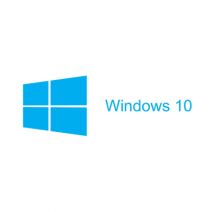 Microsoft’s most recent addition to the Windows family of operating systems, Windows 10, is full of new features, but when it comes to implementing it, many businesses are still dragging their heels. However, the primary reason for this seems to be the fact that organizations want to make sure Windows 10 won’t break their IT infrastructure. Despite this handicap, Windows 10 is still being tested on twice as many PCs as Windows 8 was following its release.
Microsoft’s most recent addition to the Windows family of operating systems, Windows 10, is full of new features, but when it comes to implementing it, many businesses are still dragging their heels. However, the primary reason for this seems to be the fact that organizations want to make sure Windows 10 won’t break their IT infrastructure. Despite this handicap, Windows 10 is still being tested on twice as many PCs as Windows 8 was following its release.
 With technology being so important in the modern office, there are thousands of gadgets produced each year that are designed to work with existing technology to deliver marginal-to-significant increases to an individual’s productivity. Each year, many of these gadgets fail in some way or fall out of public consciousness quickly, becoming nothing but the answer to a trivia question a decade from now at your favorite watering hole.
With technology being so important in the modern office, there are thousands of gadgets produced each year that are designed to work with existing technology to deliver marginal-to-significant increases to an individual’s productivity. Each year, many of these gadgets fail in some way or fall out of public consciousness quickly, becoming nothing but the answer to a trivia question a decade from now at your favorite watering hole.
 Your business’s wireless Internet connection is one of its most valuable assets, and without it, your operations would surely suffer. Your wireless technology, like smartphones, tablets, laptops, and even your network depend on it in order to function properly. WiFi is known to be pretty inconvenient at times due to questionable connections and security, but a new technology wants to change all of that: Li-Fi, wireless Internet connections delivered by special light bulbs.
Your business’s wireless Internet connection is one of its most valuable assets, and without it, your operations would surely suffer. Your wireless technology, like smartphones, tablets, laptops, and even your network depend on it in order to function properly. WiFi is known to be pretty inconvenient at times due to questionable connections and security, but a new technology wants to change all of that: Li-Fi, wireless Internet connections delivered by special light bulbs.
 The technological landscape of the office environment has evolved significantly over the past few years, especially in terms of technology that fosters inter-office collaboration. What could only be accomplished by sitting down together in the same room, can now be done remotely through the use of video conferencing and VoIP technologies. It’s a true golden age of business technology achievement, and if your business isn’t fully leveraging your communications technology, you’ll quickly fall behind.
The technological landscape of the office environment has evolved significantly over the past few years, especially in terms of technology that fosters inter-office collaboration. What could only be accomplished by sitting down together in the same room, can now be done remotely through the use of video conferencing and VoIP technologies. It’s a true golden age of business technology achievement, and if your business isn’t fully leveraging your communications technology, you’ll quickly fall behind.
 Today’s civilization might be the most technologically advanced in the history of the world as we know it, but this also comes with the burden of properly disposing outdated technology. Unfortunately, the world faces a significant e-waste problem that cannot be ignored. As consumers of technology, this responsibility falls on your shoulders.
Today’s civilization might be the most technologically advanced in the history of the world as we know it, but this also comes with the burden of properly disposing outdated technology. Unfortunately, the world faces a significant e-waste problem that cannot be ignored. As consumers of technology, this responsibility falls on your shoulders.
 Technology has the potential to make the future of your business a success. Although, if you don’t manage your company’s technology properly, it can hinder your business, causing you to miss out on future success. In order to take full advantage of what technology can do for you, you’ll have to keep the future in mind.
Technology has the potential to make the future of your business a success. Although, if you don’t manage your company’s technology properly, it can hinder your business, causing you to miss out on future success. In order to take full advantage of what technology can do for you, you’ll have to keep the future in mind.
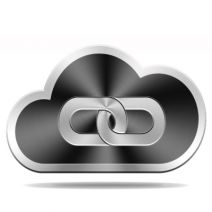 Technology changes constantly, and as such it can be difficult to change and adapt to new trends in the industry. Cloud services are making the implementation of scalable solutions somewhat easier, but often times integrating cloud solutions is forgotten by business owners who don’t really know what the cloud can offer their organization.
Technology changes constantly, and as such it can be difficult to change and adapt to new trends in the industry. Cloud services are making the implementation of scalable solutions somewhat easier, but often times integrating cloud solutions is forgotten by business owners who don’t really know what the cloud can offer their organization.
 Does your office still use a fax machine? You know that it’s an outdated piece of equipment, but this fact might not deter its continued use if you don’t care about the latest technology (we admit that not everyone does). Perhaps by taking a look at all the money wasted by using a fax machine, we can convince you otherwise.
Does your office still use a fax machine? You know that it’s an outdated piece of equipment, but this fact might not deter its continued use if you don’t care about the latest technology (we admit that not everyone does). Perhaps by taking a look at all the money wasted by using a fax machine, we can convince you otherwise.
 Remote workers are changing the way that both employees and their employers are viewing their workspace. It’s been proven that businesses can mitigate their overhead costs and increase their employee retention rate by allowing their team to work from home, but without the proper technology, they have no chance of being as productive as they can be if they were in the office.
Remote workers are changing the way that both employees and their employers are viewing their workspace. It’s been proven that businesses can mitigate their overhead costs and increase their employee retention rate by allowing their team to work from home, but without the proper technology, they have no chance of being as productive as they can be if they were in the office.


